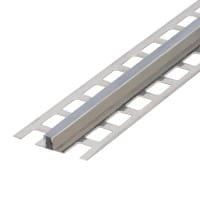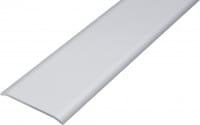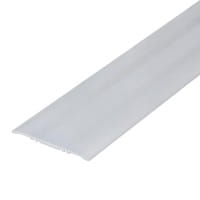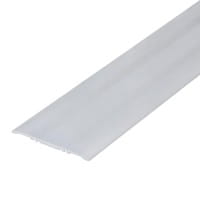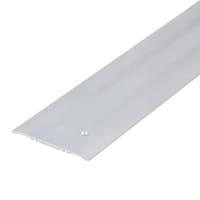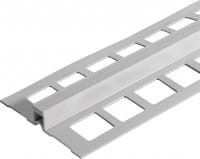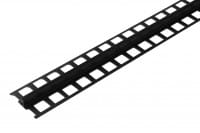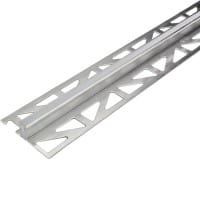Expansion joint profiles for stress compensation
What are expansion joint profiles needed for?

Expansion joints are necessary to resist the natural movements of floor and wall coverings due to temperature and humidity variations and to prevent cracks. These movements can be caused by temperature and humidity fluctuations, but also by structural changes in the building or subfloor. Expansion joint profiles are typically used in areas where tile coverings abut adjacent materials such as walls, stairs or door thresholds, or where different tile types or sizes meet. Expansion joint profiles are also used in large areas or rooms, such as shopping malls, halls or airports, to accommodate movement between tiles and maintain the stability of the entire flooring system. Overall, expansion joint profiles are an important component of tile flooring that not only improve its functionality and durability, but can also help to achieve a professional and aesthetically pleasing appearance.
Expansion joint profiles in the assortment
Expansion joint profiles come in a wide variety of designs. You can choose between different materials, colors, sizes and shapes to meet all your needs. You can choose between different profiles. Whether with or without EPDM insert, narrow or wide, laying in thick or thin bed. We have the right one for every construction situation!
We offer expansion joint profiles made of stainless steel, aluminium and PVC. Available in heights from 3 - 65 mm.
Expansion joint profiles made of PVC

The larger heights of 30 - 65 mm are available exclusively with the PVC expansion joint profile for thick-bedwhich is used only in the screed area.
The other heights of 10 - 15 mm cover the most common tile thicknesses. We offer PVC expansion joint profiles in the colors gray and black, depending on your preference (e.g. Expansion joint profile PVC black narrow), this of course has no influence on the individual properties of the profiles.
Expansion joint profiles from aluminium and stainless steel
Expansion joint profiles or also movement profiles from aluminium and stainless steel we offer in heights from 3 - 12,5 mm. They not only resist mechanical loads very well, but are also durable. You can often find these expansion joint profiles in car dealerships or rooms and halls with large format tiles. If necessary, our stainless steel profiles can also be polished again at any time after installation, so that the metallic shine does not fade. In general, it can be assumed that if you use stainless steel profiles, they are very resistant to physical influences due to the massive natural of the alloy itself.
Expansion joint profiles made of stainless steel with EPDM inlay are suitable for floors subjected to particularly high mechanical stress. Expansion joint profiles made of aluminium with EPDM inlay are designed for medium-heavy load. The specially developed metal movement profiles absorb high loads and transfer them evenly into the flooring and subfloor. At the same time, it reduces impact sound transmission and structure-borne sound transmission.
The ethylene-propylene-diene rubber insert in short EPDM belongs to the high-quality plastics or rubbers. EPDM is resistant to most chemical stresses such as alcohols and acids. They are also resistant to UV light. There is no need to worry even in case of large temperature fluctuations.
Application of expansion joint profiles

They are used, for example, for warehouses and production halls, underground garages and shopping centers. Expansion joint profiles are not only suitable for balancing the floor movement, besides they also absorb vibrations.
To prevent stains on the visible surface, careful handling of cement materials is required. The tile profile must be completely embedded in the thin-bed mortar. Generally, when installing expansion joint profiles, it is said that they should never protrude from the floor, but there should be no indentation either. The optimum finish is at floor level, so you should also always choose rails 1mm higher than your tiles. Most of our expansion joint profiles are equipped with an EPDM insert, which can absorb movements and thus prevent cracking.
Processing of expansion joint profiles
- Select expansion joint profiles according to the adhesive bed thickness and tile thickness. You should always select expansion joint profiles approx. 1 mm higher than the tiles you want to install. The adhesive layer under the tiles will then make them flush with the expansion joint profile.
- Press the expansion joint profiles into the adhesive bed and align them. Transfer the movement joints from the substrate so that they are congruent.
- Apply filler over the entire surface of the fastening legs.
- Press tiles firmly into place and align so that they are flush with the upper edge of the profile and lay tiles to full depth.
- Leave a gap of 2 - 3 mm to the profile.
- Completely fill the joint between the tiles and the profile with grout.

